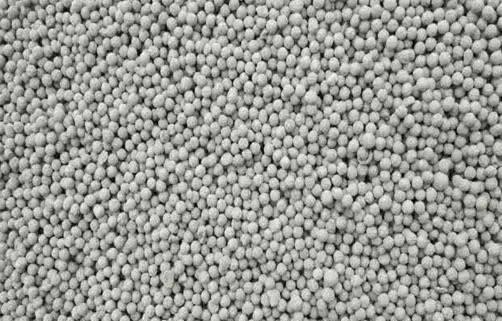Sludge preparation of swelled ceramsite must meet two basic conditions:
① The raw material contains enough gas-generating components (such as illite, hematite, pyrite, dolomite, etc.);
② generates enough glass phase under high temperature conditions to encapsulate the generated gas.
The main components of raw materials for firing ceramsite are generally SiO2 and Al2O3. Al2O3 produces mullite and other mineral components under high temperature conditions, which is the main source of ceramsite strength; alkaline oxides Fe2O3, RO (CaO, MgO), R2O (K2O, Na2O), etc. are melting aid components. When the chemical composition of the raw material is located in the swelled area of the three-phase diagram, it can be used as a raw material for firing ceramsite. The suitable range for producing swelled ceramisite is SiO2 48%-65%, Al2O3 14%-20%, Fe2O3 The sum of fluxes such as RO and R2O is 13% to 26%, and m (SiO2 + Al2O3)/m (Fe2O3 + RO + R2O) is 3.5 to 10.
Sludge is similar to clay, shale and other main components, mainly SiO2 and Al2O3, and it has the possibility of resourceful preparation of light ceramsite. Adding too much aluminum-based flocculant to the sludge of the water supply plant results in a relatively low SiO2 content and a high Al2O3 composition, which will cause the strength of the ceramsite to decrease, and at the same time the sintering temperature will increase, resulting in a decrease in the quality of the ceramsite product and energy waste. The sewage sludge also has the problem of low SiO2 content. In addition, its loss on ignition is quite large (LOI>40%). It shrinks significantly during the calcination process, and there is no high temperature liquid phase. It usually does not have the conditions for direct firing of ceramsite. . Therefore, the researchers adopted the method of adding raw materials containing silicon, aluminum and other auxiliary materials to resourcefully utilize the sludge to burn ceramsite. The main chemical components of commonly used additive materials such as fly ash and montmorillonite. After adding silicon and aluminum auxiliary materials, it can basically meet the raw material requirements for firing ceramsite. Sludge as an auxiliary admixture plays a role in promoting the expansion of ceramsite.



